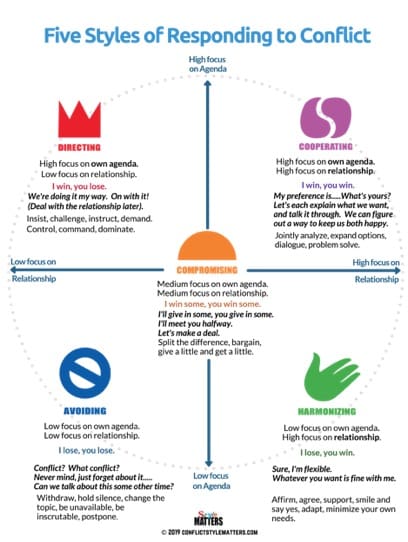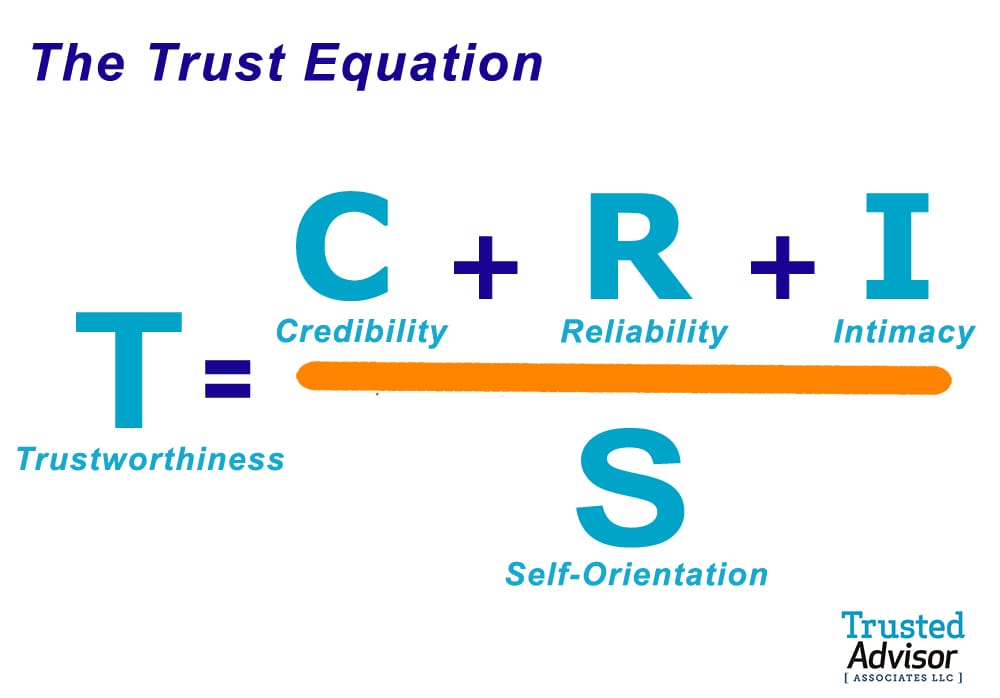Conflict Competent Leadership
This module was created by Mark Baril. It will provide concepts and tools to enable users to:
- Have a clearer picture of where conflict fits when leading a team
- Develop skills to become a conflict competent leader
- Develop trust and trustworthiness
- Develop conflict competency
- Take steps towards being a more conflict competent leader
This module will address the following Core Competencies
- Create basic frameworks for understanding conflict
- Build awareness of physical and emotional responses to conflict
- Enhance ability to regulate emotions while engaging in conflict
- Support skillful communication
Leaders within social movements are typically passionate, dedicated, and strongly motivated by the work they do. The same ideas, concerns, and mission that drives them to be so passionate about the work also drives the people both inside and outside the movement they are tasked to lead. Even experienced leaders may worry: “How do we harness the power of the dedicated people around us, while taking into consideration their potential passionate opposing views?”
Creating a conflict competent team or movement, which embraces and lives the core concepts of the Conflict Transformation Fund, involves risk-taking by the participants. Participants must feel safe exploring, changing, and embracing new ideas, while exposing themselves and the organization to a variety of identity threatening circumstances. The willingness to take risks is directly correlated to the level of trust we have in a situation or person or group of people. Conflict competency relies on trust to exist. Making matters even more complex for leaders, the existence of trust, in turn, relies heavily on conflict competency.
Which skills should be prioritized depends on the situation. When proactively growing and deploying key leadership skills within teams where disputes and unresolved conflicts do not exist, trust building is prioritized, followed by developing the organization’s conflict literacy, conflict management, and building conflict resilience. In situations where disputes and conflict are unmanaged and unresolved, resolving the dispute(s) must take priority. Trust and conflict competency are deeply intertwined. In order to be the best leaders we can be, we must understand both the distinctions and the overlaps.
Trust Building
Trust is the willingness of a party to be vulnerable to the actions of another party based on the expectation that the other will perform a particular action important to the trustor, irrespective of the ability to monitor or control that other party (Mayer 1995). Both trust and distrust involve movements toward certainty: trust concerning expectations of things hoped for and distrust concerning expectations of things feared (Lewicki, McAllister, and Bies 1998).
"Today, the relevance of trust is no longer questioned. It is commonly understood that trust is the foundation of effective relationships leading to business results. The bottom line: teams do not perform well without trust." -Reina, Reina and Hudnut: Center for Creative Leadership Research Report.
So, how do you build trust in your leadership? Understanding the key elements of trust and then working to foster and demonstrate them is an important first step, followed by helping others to understand and act upon the same elements. Below are some resources for understanding this concept further. The Trust Equation is a measure of a persons trustworthiness and The Trust Formula is a measure of people's propensity to trust others. Use these ideas to develop your own view of leadership and trust building.
The Trust Equation
The Trust Equation (Trusted Advisor Associates) uses four objective variables to measure trustworthiness. These four variables are best described as: Credibility, Reliability, Intimacy and Self-Orientation.These variables combine into the following equation:
The Trust Formula
Conflict Competency
Know Yourself and Help Others Know Themselves
Conflict competencies are a critical element of the social/political organizations team skills and individual skills. Although one can study and practice many elements to become aware and “good” at conflict as a leader, there are four core elements of conflict competency:
- Have personal access to multiple conflict modes.
- Understand what triggers us and why.
- Understand how to have a difficult conversation.
- Know how to lead a basic mediation process.
Once leaders have learned, practiced, and mastered these skills, helping team members, stakeholders, and others involved in the movement also learn them will demonstrate the leadership’s support for building conflict competencies in the entire system.
Self-Awareness of Conflict Modes
Each of us has developed our own conflict style that we fall back on when we are presented with a situation where it appears that our wishes differ from those of someone else. Some push to win the conflict, some avoid the situation, and some fall at a variety of points in between. We have learned these behaviors over a lifetime of experiences and in multiple contexts, and we feel comfortable using these modes. Because of this comfort and dependence, we tend to use our ‘go to’ style in situations where it may not be the best way to interact.
Understanding our preferred mode in conflict communications and recognizing our behaviors in the moment is critical to developing the ability to access a variety of conflict modes based on the situation. For leaders, using a variety of appropriate conflict modes/styles is a key conflict competency. Although there are many ways to learn this competency, using a Conflict Style Inventory tool can be a solid starting point. Two well-known tools are: The Thomas Kilmann Conflict Mode Instrument and the Kraybill Conflict Style Inventory.
Learn more about Conflict styles in the "Foundations for Building Conflict Literacy" module of this Framework.


Summary
Leading a social/political movement means working with a team of humans and supporting their complex individual and collective needs. Passionate, creative people with deep convictions behave with passion, creativity, and conviction when they experience conflict. In other words, the same qualities which make them valuable staff, advocates, and volunteers can lead to equally charged conflicts. As leaders we must prepare both ourselves and the people we work with to be ready and competent around trust and conflict.
Next Steps
- Explore one or more of the Trust models described in this section by reading and practicing and debriefing with people you trust. Combine this new understanding with your own style and then practice boosting or enhancing trust levels with the people you interact with.
- Investigate the four core self-awareness ideas described above, and linked below, and explore your own tendencies, methods, and ideas. Work together to help the organization explore and understand themselves.
- Strive to engage with others in your team in ways that are mindful, inclusive, and connected.
Resources
On Trust
Speed of Trust (Franklin Covey)
The Trust Equation (Trusted Advisor Associates)
The Trust Formula (Resologics)
Conflict Styles/Modes
Thomas Kilmann Conflict Mode Instrument
The Kraybill Conflict Style Inventory
Conflict Triggers
"What are your conflict hooks?" Tammy Lenski
Difficult Conversations
Nonviolent Communication by Marshall Rosenberg (see also: "Basics of Nonviolent Communication"
Difficult Conversations by Douglas Stone, BrucePatton and Sheila Heen
Crucial Conversations by Kerry Paterson
Mediation: See module of this Framework: "Mediation: What It Is and How It Works"
Do No Harm: Mindful Engagement for a World in Crisis by Wendy Wood and Thais Mazur
What We Must Do: A Guide for Perilous Times by Wendy Wood and Thais Mazur


